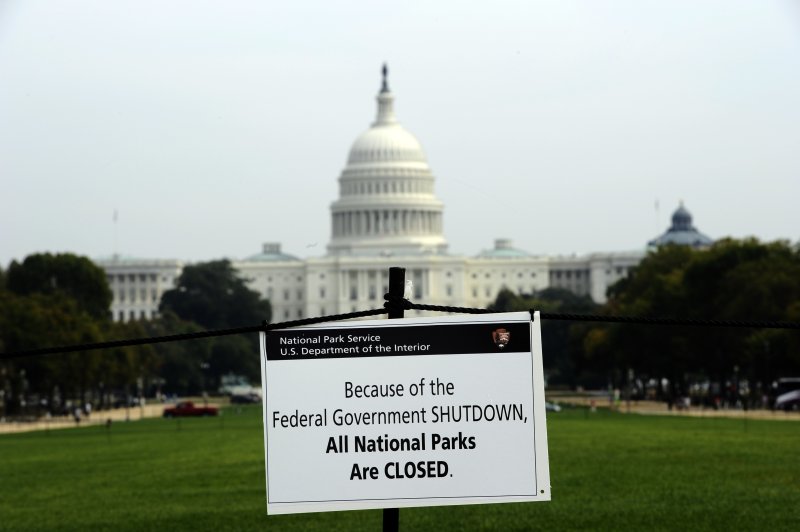
For 30 of the last 40 years, America has operated under divided government—with at least one chamber of Congress controlled by a different party than the presidency. The effects of the impasse are evident. Despite an urgent social, economic, and public health crisis, the current Congress is on pace to become the least productive in American history, sending fewer bills to the president’s desk than the previous record-holders from 2011-2013 and passing less than a quarter of the 906 bills approved by the infamous “Do Nothing” Congress of 1947-1949 (2013-2015 is currently second-to-last.)
Presidents have generally responded by expanding the bounds of executive power in order to circumvent the congressional logjam. President George W. Bush governed with a disregard for international treaties and congressional statutes; when signing bills into law, Bush frequently attached “signing statements” explaining which parts of the law he personally deemed unconstitutional and intended to ignore. After Congress failed to pass protections for undocumented “Dreamers,” President Obama signed an executive order to grant protections anyways. His successor, President Trump, declared a “national emergency” in order to allocate $6.5 billion from the Department of Defense towards his controversial border wall after Congress chose to shut down the government rather than fund Trump’s pet project.
In a parliamentary system, such an extended period of fruitlessness is almost unfathomable. In the Westminster system, the executive has a legislative majority by definition. Governments can be dissolved at any time by a majority vote of the Parliament, but in the meantime, they are more able to implement the agenda that swept them into power.
In his essay on the “Perils of Presidentialism,” Spanish-American political scientist Juan Linz outlined how presidential systems are not only prone to legislative gridlock, but also to wholesale democratic collapse. “Aside from the United States,” Linz writes, “only Chile has managed a century and a half of relatively undisturbed constitutional continuity under presidential government—but Chilean democracy broke down in the 1970s.” The data supports Linz’s observation, although some scholars have questioned the proposed causal relationship—among other things, parliamentary countries tend to be former civilian (not military) dictatorships and to be former British colonies. They may also share political characteristics independent of parliamentarism.
One thing Linz points out is that, relative to parliamentary systems, presidential elections are “winner-take-all,” potentially leading to a more high-stakes and polarized election season. In a parliamentary system, majorities last only as long as their popularity remains, while losing a presidential election locks out the opposition party for a minimum of four to five years.
This conclusion is disturbing when combined with another vice of the presidential system—it tends to encourage cults of personality. Not only can presidentialism directly contribute to an authoritarian decline (think of Turkey’s Erdogan or Russia’s Putin) but it can also distort “everyday politics” because voters may overestimate the power of the presidency and lay all their grievances at the president’s feet. The economy is a strong predictor of incumbent party success, but it goes further than that: Political scientists Larry Bartels and Christopher Achen collected data to suggest that “2.8 million people voted against Al Gore in 2000 because their states were too dry or too wet.” Droughts and flooding could’ve cost Al Gore seven states and the presidency.
Caption: Did climate change doom the climate candidate? Source: The Hill
It’s likely that governing parties in parliamentary systems are penalized and praised in the same ways, but the key difference is that parliamentary majorities have a chance to govern. In a system that structurally requires compromise, Linz notes how withholding cooperation can be strategic for the party out of power, at least theoretically. If voters judge the majority party by the functioning of government, then working with the majority to pass major legislation boosts the majority’s reelection chances.
As a result, Linz’s gravest concern was not the election itself, but what happens afterwards in periods of divided government. In parliamentary systems, Parliament is the only source of democratic legitimacy. The unwritten constitution of Britain is commonly rendered as eight words: “What the Queen in Parliament enacts is law.” All acts of Parliament since the Magna Carta together form the supreme law of the land.
Contrastingly, in a presidential system, there are two founts of democratic legitimacy—the popularly elected president and the popularly elected Congress. When these branches disagree, Linz writes that “there is no democratic principle on the basis of which [disputes] can be resolved.” The undemocratic tiebreaker can be the courts, but it is often the military.
Gridlock is of course not unique to the American arrangement. For example, the British parliament has spent the last few years tied up in knots trying to find a passable Brexit strategy. Last March British MPs put eight very different visions for Brexit to a parliamentary “indicative vote”—and all of them failed to garner a majority.
This standoff is analogous to inter-branch conflict in the US; it features the legislature (Parliament) disagreeing with the executive (Theresa May’s government). This situation was so unusual however that the Conservative party government considered the calling of indicative votes (in defiance of the executive) “a dangerous constitutional precedent” and a minor coup, which required multiple cabinet members to resign from the Conservative Party.
Parliament’s defiance of the prime minister was only possible with significant defectors from her own ranks—May’s withdrawal agreement suffered the largest defeat of any PM’s bill in UK history. Whereas in the US gridlock comes from ideological sorting and heightened partisanship, Brexit was a disaster precisely because it “cuts completely across party lines.” Parliaments are well suited for parties; presidencies often not so much.
Brexit is also unique for having what amount to dueling electoral mandates of the sort the US experiences routinely. After the 2016 referendum in favor of Brexit, Theresa May sought to strengthen her hand in negotiations by expanding her majority. The move backfired, and May lost her majority, her mandate, and eventually her job as prime minister. After the House of Commons rebuked Boris Johnson in his first day on the job with an indicative-votes style seizure of control, Johnson responded by again calling a general election, this time bringing Conservatives a majority. With a renewed mandate, Johnson then brought Britain out of the EU.
Caption: Members of Parliament have struggled to break the tie between two forms of electoral legitimacy. A Labour MP decided the tiebreaker was “whoever holds the royal mace.” Video can be seen at The Guardian
To emphasize the point again: A major cause of the crisis that has crippled British politics—dueling electoral mandates—is baked into the American system. Donald Trump can claim an electoral mandate from the (higher-turnout) 2016 election, while Democrats can claim a mandate from the (more recent) 2018 election and the Constitution is mute on the matter. Since incumbent presidents tend to lose Congressional seats in midterms, this setup happens pretty often. And even within a single election, the party who wins the House, the Senate or the electoral college while losing the popular vote can be seen as partially illegitimate from day 1, even though they were elected in full accordance with constitutional principles.
Linz hints that one reason that America has survived is the “uniquely diffuse character of American political parties.” The American Founders did not write the Constitution with parties in mind, and although parties sprouted within a few years, they were nowhere near as disciplined as their European counterparts; a Southern Democrat looked very different from his Wisconsin colleague. The localized nature of congressional parties allowed for the issue-based coalitions the framers anticipated, and also defused the stakes of presidential contests.
Princeton political scientist Frances Lee argues that this dynamic ended in the 1980s with the rise of “insecure majorities.” Whereas Democrats controlled the House almost continuously from 1932 to 1992, control of Congress now routinely switches hands, meaning that regaining power is prioritized and party cohesion is paramount, according to Lee. In the 1960s, Republican lawmakers would’ve been happy with a seat at the table; after Obama’s win in 2008, future House Speaker Eric Cantor gathered his Republican colleagues and proclaimed that “we’re not here to cut deals and get crumbs and stay in the minority for another 40 years. We’re going to fight these guys.”
Regardless of why the change occurred, it is clear that the “uniquely diffuse character of presidential elections” is no longer, and so some worry that “the Linzian nightmare” is in play in the U.S. And while ratifying a new parliamentary constitution seems exceedingly unlikely (we can barely pass a federal budget these days) there are many other steps we can take to adapt our system for a party-oriented and polarized reality. Abolishing the electoral college is popular in polls; opinions on the filibuster are less well-defined. The New York Times editorial board suggests enlarging the House of Representatives and implementing multi-member districts. My colleague Derek Nielsen argues for expanding ranked-choice voting and I like the idea of expanding automatic voter registration. All of these proposals could either clarify the popular will or make it easier for majorities to govern.
Bipartisanship can be an ideal to strive for, but we can’t accept perpetual obstinance. Not only are parliaments more stable, some evidence suggests they’re also more economically prosperous, socially equal and environmentally conscious, with better debt ratings and literacy rates. This is largely because parliaments are, to borrow Linz’s words, more flexible and less rigid. As Fareed Zakaria wrote in 2011 in response to Joshua Tucker on debt, “we’re living in a world where you need governments that are able to respond decisively and quickly. In a fast-moving world, paralysis is dangerous.”
Checks and balances aren’t a bad idea, and they deserve part of the credit for the US’s run of democratic stability. But in civics class we’re also taught that the Constitution is a living document designed to adapt with the times. Yet we’ve had arguably the same governing structure since the Senate went to direct elections in 1912. It is time to find a new balance between checks and balances and governing capacity; our current statement could be deadly to our democracy.



